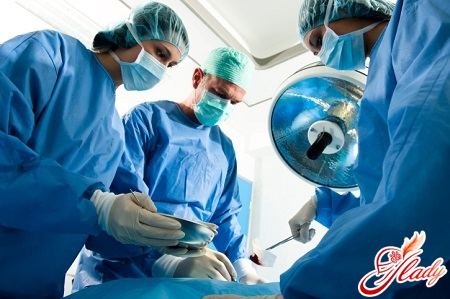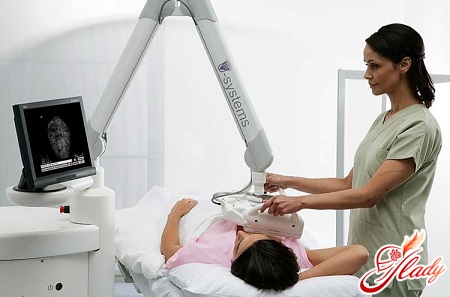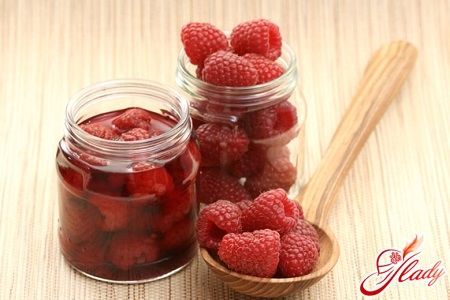 Broad-spectrum antibiotics arethe concept is so firmly in the everyday life of modern mankind that each of us does not think his life without them. However, despite this, the society has a huge number of different points of view on the problem of antibiotics: how and in what cases it is necessary to apply, how do they affect the human body and harm it? The answers to these questions, as a rule, boil down to two diametrical opposites. According to one group of opponents - antibiotics is nothing more than a highly dangerous, chemically synthesized substance that has a very negative effect on the human body, damaging its immune system, intestinal microflora and digestive organs. According to them, with any pathogenic pathogens of various diseases, the human body must cope independently, without external interference and the use of antibiotics. The second group of opponents is sure that antibiotics are a panacea, they must have at least a few varieties of antibiotics in their home "arsenal" and start using them at the very least signs of indisposition. And if to such people at the slightest rise in temperature the doctor did not prescribe antibiotics, in their eyes he simply loses all professionalism and trust. Of course, absolutely no one can say that neither one nor the other point of view is absolutely correct. Absolutely true is the fact that, for example, antibiotics for colds will not bring anything but harm. But, for example, pneumonia (inflammation of the lungs), cure without antibiotics is very, very difficult. Earlier, when antibiotics were not known to people, very many diseases that are cured today in a few days, then in most cases, resulted in death. In addition, when choosing or rejecting antibiotics, it should be remembered that to date, there are antibiotics of a new generation that bring minimal harm to the human body. In addition, it is necessary to take into account such a thing as the sensitivity of the body to antibiotics and other factors. Of course, people who do not have medical education, independently choose an antibiotic is almost impossible, so these medicines should be prescribed only by a doctor. However, any person should know the principle of antibiotics, the rules of treatment and recovery of the body. This is exactly what will be discussed in this material. However, in order for a person to fully understand the mechanism of the effect of antibiotics on the sick person's body, it is necessary to clearly understand how an infectious or inflammatory disease develops and develops. As everyone knows, all infectious diseases in humans develop after the introduction into the body of various pathogenic microorganisms. All these microorganisms are extremely diverse, but they all stand out in three main groups:
Broad-spectrum antibiotics arethe concept is so firmly in the everyday life of modern mankind that each of us does not think his life without them. However, despite this, the society has a huge number of different points of view on the problem of antibiotics: how and in what cases it is necessary to apply, how do they affect the human body and harm it? The answers to these questions, as a rule, boil down to two diametrical opposites. According to one group of opponents - antibiotics is nothing more than a highly dangerous, chemically synthesized substance that has a very negative effect on the human body, damaging its immune system, intestinal microflora and digestive organs. According to them, with any pathogenic pathogens of various diseases, the human body must cope independently, without external interference and the use of antibiotics. The second group of opponents is sure that antibiotics are a panacea, they must have at least a few varieties of antibiotics in their home "arsenal" and start using them at the very least signs of indisposition. And if to such people at the slightest rise in temperature the doctor did not prescribe antibiotics, in their eyes he simply loses all professionalism and trust. Of course, absolutely no one can say that neither one nor the other point of view is absolutely correct. Absolutely true is the fact that, for example, antibiotics for colds will not bring anything but harm. But, for example, pneumonia (inflammation of the lungs), cure without antibiotics is very, very difficult. Earlier, when antibiotics were not known to people, very many diseases that are cured today in a few days, then in most cases, resulted in death. In addition, when choosing or rejecting antibiotics, it should be remembered that to date, there are antibiotics of a new generation that bring minimal harm to the human body. In addition, it is necessary to take into account such a thing as the sensitivity of the body to antibiotics and other factors. Of course, people who do not have medical education, independently choose an antibiotic is almost impossible, so these medicines should be prescribed only by a doctor. However, any person should know the principle of antibiotics, the rules of treatment and recovery of the body. This is exactly what will be discussed in this material. However, in order for a person to fully understand the mechanism of the effect of antibiotics on the sick person's body, it is necessary to clearly understand how an infectious or inflammatory disease develops and develops. As everyone knows, all infectious diseases in humans develop after the introduction into the body of various pathogenic microorganisms. All these microorganisms are extremely diverse, but they all stand out in three main groups:
So, how to deal with all the abovepathogenic microorganisms? If they need to be destroyed from any surface or even skin, there is a wide choice of different preparations for disinfection. For example, all the same ethyl alcohol, or hydrogen peroxide. But they are not suitable for ingestion, since they have a strong and harmful toxic effect on it. That's it for such cases, when the body needs to get rid of the effects of pathogens, antibiotics are intended. Very often people confuse two concepts - antibiotics and "antibacterial drugs." Antibiotics are substances of exclusively natural origin, but antibacterial drugs are already chemically synthesized substances, according to the principle of action, absolutely similar to antibiotics, substances of natural origin. However, one should not go deep into the topic of their origin and receipt, since they have the same impact on the body - both positive and negative.
The principle of the effect of antibiotics on the human body
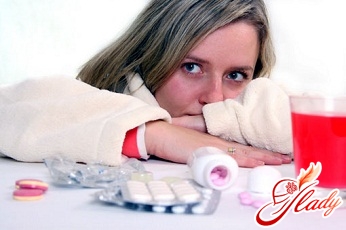 The most important thing that allows doctors with successuse antibiotics for human treatment is the fact that all the vital processes taking place in the cells of the human body are fundamentally different from the analogous processes of life of any bacterial cell. And if ethyl alcohol or hydrogen peroxide, when exposed to both types of cells - both human and bacterial - has an equally toxic effect on both groups of cells, then antibiotics act extremely selectively. Antibiotics affect only those processes that occur precisely in the cell of a pathogenic microorganism, but never affect human cells. All antibiotics have a very strict classification, depending on how the impact on life activity. It is on the basis of the chemical structure and the type of action that the classification of antibiotics is carried out - some groups are called upon to suppress the synthesis of the outer membrane of a bacterial cell that is simply absent in the human body. To this group of drugs are widely used antibiotics penicillin series, cephalosporins and a number of other drugs. Another group of antibiotics acts in an entirely different way - they just almost completely suppress the complete protein synthesis in bacterial cells. These drugs include antibiotics of the tetracycline series, for example, doxycilin, macrolides - erythromycin and aminoglycosides - streptomycin. In addition, the list of antibiotics is divided not only on the basis of the effect on pathogens, but also on such a factor as antibacterial activity. Probably, every person who at least once in his life encountered the need to use an antibiotic, drew attention to the annotation to the drug, which necessarily always indicates the spectrum of activity of the antibiotic. Some antibiotics are of a wide spectrum of action that are active against very many bacteria, while others, on the contrary, operate in a narrowly focused manner, on a certain group of bacteria. On some microorganisms - in particular, on viruses, an antibiotic, alas, can not exert any influence at all. Very often you can hear the question of why this is happening. The answer is very simple - bacteria and viruses have fundamentally different not only the structure, but also the functioning, so that what causes the death of bacteria does not in any way affect the viruses. And despite the high level of development of modern medicine, no effective antiviral drug has been created so far, and all known groups of antibiotics with viruses can not fight. However, doctors often face such a situation, when previously successfully used antibiotics do not bring a sick person equal relief. Why is this happening? All living organisms, and bacteria in the same number, have a remarkable ability to adapt in new environmental conditions, including the most unfavorable factors. A vivid example of such adaptation is the development of bacteria resistant resistance to certain types of antibiotics. Scientifically proved the fact that absolutely any kind of bacteria sooner or later will acquire resistance to any, even the most potent antibiotic. And than in a larger dosage the drug will be administered, and the more often - the faster this resistance develops. And pharmacists are simply confronted with the need to create new antibiotics. Currently, among pharmacologists, there is a hypothesis that if in our time, as before, pediatricians continue to prescribe antibiotics for bronchitis or antibiotics for angina, even without trying to do without their use, now years through 20 to mankind there is simply nothing to treat serious diseases. And in fact often antibiotics for children at serious diseases become the real rescue. It is very important to correctly prescribe the use of antibiotics. Of course, if a sick person is under inpatient treatment with a serious illness, for example, pneumonia or meningitis, an inflammatory disease that affects the membranes of the brain - the use of an antibiotic is simply necessary and should not be subject to any doubts and discussions. However, it should be taken into account that in a hospital environment, there is much more scope for constant monitoring of the patient's condition - from special laboratory studies to elementary 24-hour medical supervision. But if the situation is the opposite - the malaise is insignificant, and the treatment occurs at home, the responsibility is almost entirely to fall on the shoulders of the patient or his parents, if it is a child. It often happens that parents themselves ask the doctor to prescribe antibiotics to the child for flu or cold. Of course, a competent doctor will never do this, but, unfortunately, more and more often there are cases when a doctor, knowing about the inadmissibility of such treatment, prescribes antibiotics to a crumb. It's easier for him to agree with his parents than how long to explain to them why it should not be done. However, if the doctor does not prescribe an antibiotic to a child who really needs it, a simple bronchitis can turn into a serious bilateral pneumonia, and mild cystitis is a serious inflammation of the bladder. That is why parents should have at least a general idea of when antibiotic use is simply necessary, and in which it is undesirable. Various respiratory tract infections. In this disease, antibiotics are prescribed most often, but is it always justified? As the average statistical data show, on average, a child of preschool age suffers - 6 - 7 infections of the respiratory tract per year. If, for each disease, treatment is carried out with the help of antibiotics, the load on the child's body will be prohibitive and will have a very negative impact on his health. At present, there is no reliable way to diagnose what the nature of the origin of respiratory tract infections is viral or bacterial. However, doctors reliably know that acute bronchitis (an inflammatory process affecting the mucous membrane of the bronchi), as well as acute rhinitis (runny nose), are caused in 90% of cases by viruses of various origin, inflammation of the tonsils (tonsillitis), mucous membranes of the mouth (stomatitis) , otitis media, are most often caused by pathogenic bacteria. That is why the first thing that doctors look at when prescribing medicines is what type of infection. For example, with bronchitis of a viral origin, antibiotics are not rushed to prescribe the doctors, but if the child has angina, and the treatment of antibiotics implies without fail. However, unfortunately, in life very often you can observe the following situation: the baby's fever rises, a cough appears. The first few days parents are trying to cope without antibiotics. However, most parents fear that bronchitis will result in serious pneumonia. As a rule, under the yoke of their own fears and on the advice of relatives and friends, parents begin to give antibiotics in a few days. How justified is this measure? A common misconception is that if the temperature persists for 3 days, the fourth should be prescribed antibiotics. In fact, this is completely wrong. With any virus infection, the temperature lasts for about 5 days, and in some cases, a small temperature can hold for a longer time. In any case, give the child antibiotics as a febrifuge and just like that, "just in case." Antibiotics are not at all designed to calm parents' nerves - there is a valerian for this. In the same case, if parents notice signs of deterioration in the child, such as a significant increase in body temperature (up to 39-40 degrees), the occurrence of difficulty breathing, pronounced weakness, they should be alerted. But even in this case, you should not go to the pharmacy for antibiotics, but you need to immediately call a doctor who can objectively assess the child's well-being and develop further treatment tactics. In addition, parents should remember that antibiotics are not antitussive drugs, but only relieve inflammation, destroying the causative agents of the disease. Cough itself is only a protective reaction of the body. And, as a rule, it cough disappears in the last place. To eliminate the cough, you need special antitussive drugs, which should also be prescribed by the doctor, based on the individual characteristics of the child's organism and the course of the disease. However, if after two to three weeks after the end of the cough the child does not pass, the parents should be worried and see a doctor who will help to find out the reason for this. The second, the most common case of antibiotic use in children is acute otitis media. As a rule, with otitis almost always doctors prescribe antibacterial therapy. This is because, in about 80% of all cases, otitis is caused by a bacterial infection. Of course, having such data, it is much more reasonable to start antibacterial therapy immediately, and not wait for worsening of the sick child's condition. If the patient has sinusitis, treatment with antibiotics also quickly enough leads to a significant improvement in the condition. However, there is one but - antibiotics for sinusitis is advisable to use only in the stage of exacerbation of the disease. Out of the aggravation stage, the sinusitis is treated by other methods. The next most frequent disease, during which antibiotics are prescribed for treatment, is cystitis. As you know, most women suffer from cystitis. And very often there is a situation where, at the first symptoms of cystitis, a woman starts taking the first antibiotic she has, in one or two days the symptoms of cystitis disappear. The woman immediately stops taking antibiotics, but at the slightest hypothermia the symptoms appear again and again. However, antibiotics for cystitis should be selected strictly individually in each case. Such self-medication with antibiotics can do a lot of harm, so at the first signs of cystitis, you need to see a doctor who will prescribe a certain examination to identify the sensitivity of the microflora of urine to antibiotics. And only after the doctor has the results of the urinalysis, he will be able to choose the most optimal treatment regimen, which will not only remove the symptoms of the disease, but kill the pathogenic microflora that caused the disease.
The most important thing that allows doctors with successuse antibiotics for human treatment is the fact that all the vital processes taking place in the cells of the human body are fundamentally different from the analogous processes of life of any bacterial cell. And if ethyl alcohol or hydrogen peroxide, when exposed to both types of cells - both human and bacterial - has an equally toxic effect on both groups of cells, then antibiotics act extremely selectively. Antibiotics affect only those processes that occur precisely in the cell of a pathogenic microorganism, but never affect human cells. All antibiotics have a very strict classification, depending on how the impact on life activity. It is on the basis of the chemical structure and the type of action that the classification of antibiotics is carried out - some groups are called upon to suppress the synthesis of the outer membrane of a bacterial cell that is simply absent in the human body. To this group of drugs are widely used antibiotics penicillin series, cephalosporins and a number of other drugs. Another group of antibiotics acts in an entirely different way - they just almost completely suppress the complete protein synthesis in bacterial cells. These drugs include antibiotics of the tetracycline series, for example, doxycilin, macrolides - erythromycin and aminoglycosides - streptomycin. In addition, the list of antibiotics is divided not only on the basis of the effect on pathogens, but also on such a factor as antibacterial activity. Probably, every person who at least once in his life encountered the need to use an antibiotic, drew attention to the annotation to the drug, which necessarily always indicates the spectrum of activity of the antibiotic. Some antibiotics are of a wide spectrum of action that are active against very many bacteria, while others, on the contrary, operate in a narrowly focused manner, on a certain group of bacteria. On some microorganisms - in particular, on viruses, an antibiotic, alas, can not exert any influence at all. Very often you can hear the question of why this is happening. The answer is very simple - bacteria and viruses have fundamentally different not only the structure, but also the functioning, so that what causes the death of bacteria does not in any way affect the viruses. And despite the high level of development of modern medicine, no effective antiviral drug has been created so far, and all known groups of antibiotics with viruses can not fight. However, doctors often face such a situation, when previously successfully used antibiotics do not bring a sick person equal relief. Why is this happening? All living organisms, and bacteria in the same number, have a remarkable ability to adapt in new environmental conditions, including the most unfavorable factors. A vivid example of such adaptation is the development of bacteria resistant resistance to certain types of antibiotics. Scientifically proved the fact that absolutely any kind of bacteria sooner or later will acquire resistance to any, even the most potent antibiotic. And than in a larger dosage the drug will be administered, and the more often - the faster this resistance develops. And pharmacists are simply confronted with the need to create new antibiotics. Currently, among pharmacologists, there is a hypothesis that if in our time, as before, pediatricians continue to prescribe antibiotics for bronchitis or antibiotics for angina, even without trying to do without their use, now years through 20 to mankind there is simply nothing to treat serious diseases. And in fact often antibiotics for children at serious diseases become the real rescue. It is very important to correctly prescribe the use of antibiotics. Of course, if a sick person is under inpatient treatment with a serious illness, for example, pneumonia or meningitis, an inflammatory disease that affects the membranes of the brain - the use of an antibiotic is simply necessary and should not be subject to any doubts and discussions. However, it should be taken into account that in a hospital environment, there is much more scope for constant monitoring of the patient's condition - from special laboratory studies to elementary 24-hour medical supervision. But if the situation is the opposite - the malaise is insignificant, and the treatment occurs at home, the responsibility is almost entirely to fall on the shoulders of the patient or his parents, if it is a child. It often happens that parents themselves ask the doctor to prescribe antibiotics to the child for flu or cold. Of course, a competent doctor will never do this, but, unfortunately, more and more often there are cases when a doctor, knowing about the inadmissibility of such treatment, prescribes antibiotics to a crumb. It's easier for him to agree with his parents than how long to explain to them why it should not be done. However, if the doctor does not prescribe an antibiotic to a child who really needs it, a simple bronchitis can turn into a serious bilateral pneumonia, and mild cystitis is a serious inflammation of the bladder. That is why parents should have at least a general idea of when antibiotic use is simply necessary, and in which it is undesirable. Various respiratory tract infections. In this disease, antibiotics are prescribed most often, but is it always justified? As the average statistical data show, on average, a child of preschool age suffers - 6 - 7 infections of the respiratory tract per year. If, for each disease, treatment is carried out with the help of antibiotics, the load on the child's body will be prohibitive and will have a very negative impact on his health. At present, there is no reliable way to diagnose what the nature of the origin of respiratory tract infections is viral or bacterial. However, doctors reliably know that acute bronchitis (an inflammatory process affecting the mucous membrane of the bronchi), as well as acute rhinitis (runny nose), are caused in 90% of cases by viruses of various origin, inflammation of the tonsils (tonsillitis), mucous membranes of the mouth (stomatitis) , otitis media, are most often caused by pathogenic bacteria. That is why the first thing that doctors look at when prescribing medicines is what type of infection. For example, with bronchitis of a viral origin, antibiotics are not rushed to prescribe the doctors, but if the child has angina, and the treatment of antibiotics implies without fail. However, unfortunately, in life very often you can observe the following situation: the baby's fever rises, a cough appears. The first few days parents are trying to cope without antibiotics. However, most parents fear that bronchitis will result in serious pneumonia. As a rule, under the yoke of their own fears and on the advice of relatives and friends, parents begin to give antibiotics in a few days. How justified is this measure? A common misconception is that if the temperature persists for 3 days, the fourth should be prescribed antibiotics. In fact, this is completely wrong. With any virus infection, the temperature lasts for about 5 days, and in some cases, a small temperature can hold for a longer time. In any case, give the child antibiotics as a febrifuge and just like that, "just in case." Antibiotics are not at all designed to calm parents' nerves - there is a valerian for this. In the same case, if parents notice signs of deterioration in the child, such as a significant increase in body temperature (up to 39-40 degrees), the occurrence of difficulty breathing, pronounced weakness, they should be alerted. But even in this case, you should not go to the pharmacy for antibiotics, but you need to immediately call a doctor who can objectively assess the child's well-being and develop further treatment tactics. In addition, parents should remember that antibiotics are not antitussive drugs, but only relieve inflammation, destroying the causative agents of the disease. Cough itself is only a protective reaction of the body. And, as a rule, it cough disappears in the last place. To eliminate the cough, you need special antitussive drugs, which should also be prescribed by the doctor, based on the individual characteristics of the child's organism and the course of the disease. However, if after two to three weeks after the end of the cough the child does not pass, the parents should be worried and see a doctor who will help to find out the reason for this. The second, the most common case of antibiotic use in children is acute otitis media. As a rule, with otitis almost always doctors prescribe antibacterial therapy. This is because, in about 80% of all cases, otitis is caused by a bacterial infection. Of course, having such data, it is much more reasonable to start antibacterial therapy immediately, and not wait for worsening of the sick child's condition. If the patient has sinusitis, treatment with antibiotics also quickly enough leads to a significant improvement in the condition. However, there is one but - antibiotics for sinusitis is advisable to use only in the stage of exacerbation of the disease. Out of the aggravation stage, the sinusitis is treated by other methods. The next most frequent disease, during which antibiotics are prescribed for treatment, is cystitis. As you know, most women suffer from cystitis. And very often there is a situation where, at the first symptoms of cystitis, a woman starts taking the first antibiotic she has, in one or two days the symptoms of cystitis disappear. The woman immediately stops taking antibiotics, but at the slightest hypothermia the symptoms appear again and again. However, antibiotics for cystitis should be selected strictly individually in each case. Such self-medication with antibiotics can do a lot of harm, so at the first signs of cystitis, you need to see a doctor who will prescribe a certain examination to identify the sensitivity of the microflora of urine to antibiotics. And only after the doctor has the results of the urinalysis, he will be able to choose the most optimal treatment regimen, which will not only remove the symptoms of the disease, but kill the pathogenic microflora that caused the disease.
Antibiotics and other factors
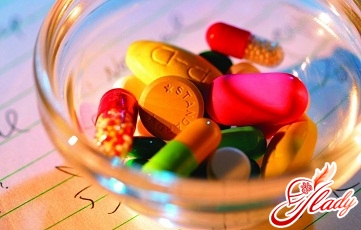 Antibiotics during pregnancy cause verymany questions and disputes. It is widely believed that antibiotics lead to fetal malformations and the birth of sick children. And are antibiotics harmful during pregnancy in fact? However, to date, there are antibiotics of the newest generation, which do not cause malformations and other complications of the normal course of pregnancy. In addition, the term of pregnancy, on which the woman is treated with antibacterial drugs, is of no small importance. The most unfavorable effect of antibiotics on the fetus is in the first trimester of pregnancy. However, even if a woman was forced to undergo antibiotic treatment, with the right drugs, the risk of complications is almost minimal. That is why it is so important to seek medical help in a timely manner, and not get involved in self-administration of antibiotics during pregnancy. Some doctors in general categorically do not accept antibiotic therapy during pregnancy, preferring to do it on their own. However, this is also far from the most correct position, because the long inflammatory process in the body of a pregnant woman, and even more so, the increased body temperature can exert no less detrimental effect than the strongest antibiotics. When choosing the type of antibiotic, doctors take into account the fact that any antibiotic often acts fairly selectively - that is, a certain group of antibiotics affect certain groups of pathogenic microorganisms, with the exception of broad-spectrum antibiotics. As already mentioned above, all antibiotics are divided into three subgroups by the nature of origin:
Antibiotics during pregnancy cause verymany questions and disputes. It is widely believed that antibiotics lead to fetal malformations and the birth of sick children. And are antibiotics harmful during pregnancy in fact? However, to date, there are antibiotics of the newest generation, which do not cause malformations and other complications of the normal course of pregnancy. In addition, the term of pregnancy, on which the woman is treated with antibacterial drugs, is of no small importance. The most unfavorable effect of antibiotics on the fetus is in the first trimester of pregnancy. However, even if a woman was forced to undergo antibiotic treatment, with the right drugs, the risk of complications is almost minimal. That is why it is so important to seek medical help in a timely manner, and not get involved in self-administration of antibiotics during pregnancy. Some doctors in general categorically do not accept antibiotic therapy during pregnancy, preferring to do it on their own. However, this is also far from the most correct position, because the long inflammatory process in the body of a pregnant woman, and even more so, the increased body temperature can exert no less detrimental effect than the strongest antibiotics. When choosing the type of antibiotic, doctors take into account the fact that any antibiotic often acts fairly selectively - that is, a certain group of antibiotics affect certain groups of pathogenic microorganisms, with the exception of broad-spectrum antibiotics. As already mentioned above, all antibiotics are divided into three subgroups by the nature of origin:
That is why, in order to appointthe most optimal antibiotic for a patient, it is first necessary to establish reliably the type of pathogen and its sensitivity to the proposed antibiotic. And only in the event that it is impossible to do this, it is possible to use antibiotics of a wide spectrum of action. Many pregnant women who are prescribed antibiotic treatment make the same mistake - they themselves reduce the dosage of the drug, believing that thereby they reduce the negative impact on the future baby, which, in their opinion, has an antibiotic. However, this should not be done in any case, since the dose of an antibiotic by a doctor is always calculated very accurately. And with a decrease in the dosage of the antibiotic, bacteria will not be destroyed, and harm to the body can be quite strong. Another issue that causes equally heated discussions is the use of alcohol during antibiotic treatment. There are two completely opposite points of view on this problem. Supporters of one of them argue that in combining alcohol and antibiotics there is absolutely nothing terrible, and their opponents say that such a combination can lead to very serious consequences for the body. Modern medicine almost always shares the second point of view. Doctors extremely do not recommend combining alcohol and antibiotics, in order to avoid the occurrence of serious complications. Their arguments are confirmed by concrete facts. For example, it is reliably known that the combination of alcoholic beverages with such antibiotics as, for example, metronidazole or tetracycline, can lead to severe damage to liver cells. In addition, alcohol has a significant effect on the metabolism and activity of almost all antibiotics. Also, alcohol interferes with the normal activity of liver enzymes, which are responsible for the cleavage of antibiotics. All this leads to a number of quite serious side effects, such as:
- The onset of severe nausea, up to exhausting vomiting.
- Severe headaches that result from serious disruption of the cardiovascular system.
- Also often there is a strong increase in blood pressure.
- Weakness and shortness of breath.
However, the most terrible complication,caused by the joint intake of alcohol and antibiotics - is a toxic liver damage. Alcohol in itself is a heavy load even on a healthy body, not to mention a weakened disease.
Restoration of the body after taking an antibiotic
Recovery after antibiotics is also veryan important aspect, which in no case can not be ignored. Despite all the benefits of antibiotic treatment, side effects also can not be ignored. Listed below are the main ones:
- Antibiotics often contribute to the development of lesions of the skin and mucous membranes fungus.
- Antibiotics strongly destroy vitamins K and vitamin C.
- In addition, antibiotics often cause the body's tendency to allergic reactions.
- Very often during the reception of antibiotics, the natural microflora of the intestine is destroyed, as a result of which development of a dysbacteriosis with all its accompanying symptoms is possible.
As already mentioned, during treatmentantibiotics must begin to drink drugs that restore the normal microflora of the body. However, you can use and no less effective folk remedies that will help to restore as quickly as possible the normal intestinal microflora and the state of the organism in general. If a sick person suffers from bloating, he will quickly and effectively help a night-drunk remedy, for the preparation of which you will need:
- 0, 5 liters of kefir or curdled milk.
- Half onions.
- 2 cloves garlic.
- 1 gram of dried dill.
- 1 gram of dry parsley.
- 1 teaspoon dried chamomile inflorescences.
- 1 teaspoon of St. John's wort.
All ingredients carefully beforehandchop, add in kefir. After that, pour half a liter of steep boiling water and mix. Wrap the container with a towel and let it brew for two hours. After this time, strain the resulting solution through gauze. Take it twice a day on an empty stomach, half the glass, for at least 7 days. Also, the next decoction helps to restore the intestinal microflora very effectively. To prepare it you will need:
- 1 teaspoon dried St. John's wort.
- Half a teaspoon of tansy baskets.
- Sage dried - half a teaspoon.
All herbs are placed in enameled dishes andpour one liter of boiling water, bring to a boil. After this, turn off the broth, let it brew for one hour and strain through gauze. Take this broth should be one tablespoon, before each meal, at least 10 days. Also do not forget that almost all sour-milk products have a very beneficial effect on the digestive tract, especially on the normalization of the intestinal microflora. However, do not buy completely fat-free sour-milk products. Also, doctors do not recommend taking a great interest in all sorts of drinking yoghurts - they do not bring any good benefits. And most importantly - for all signs of illness, you need to seek qualified medical help. Often, a sick person applies for medical help only after deterioration and doctors are forced to resort to antibiotics, whereas if a person turned early in the disease, their use could be avoided. We advise you to read:




